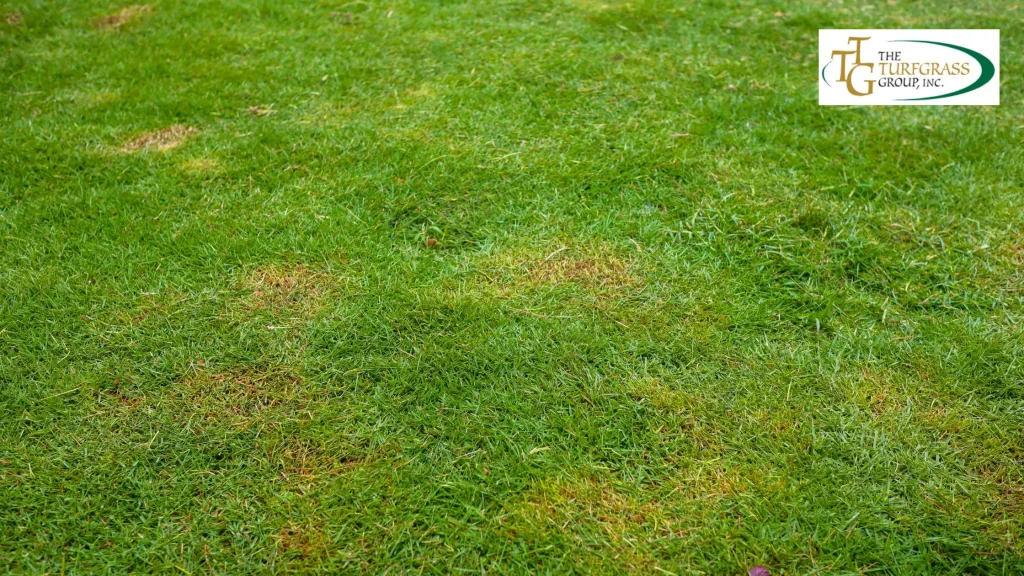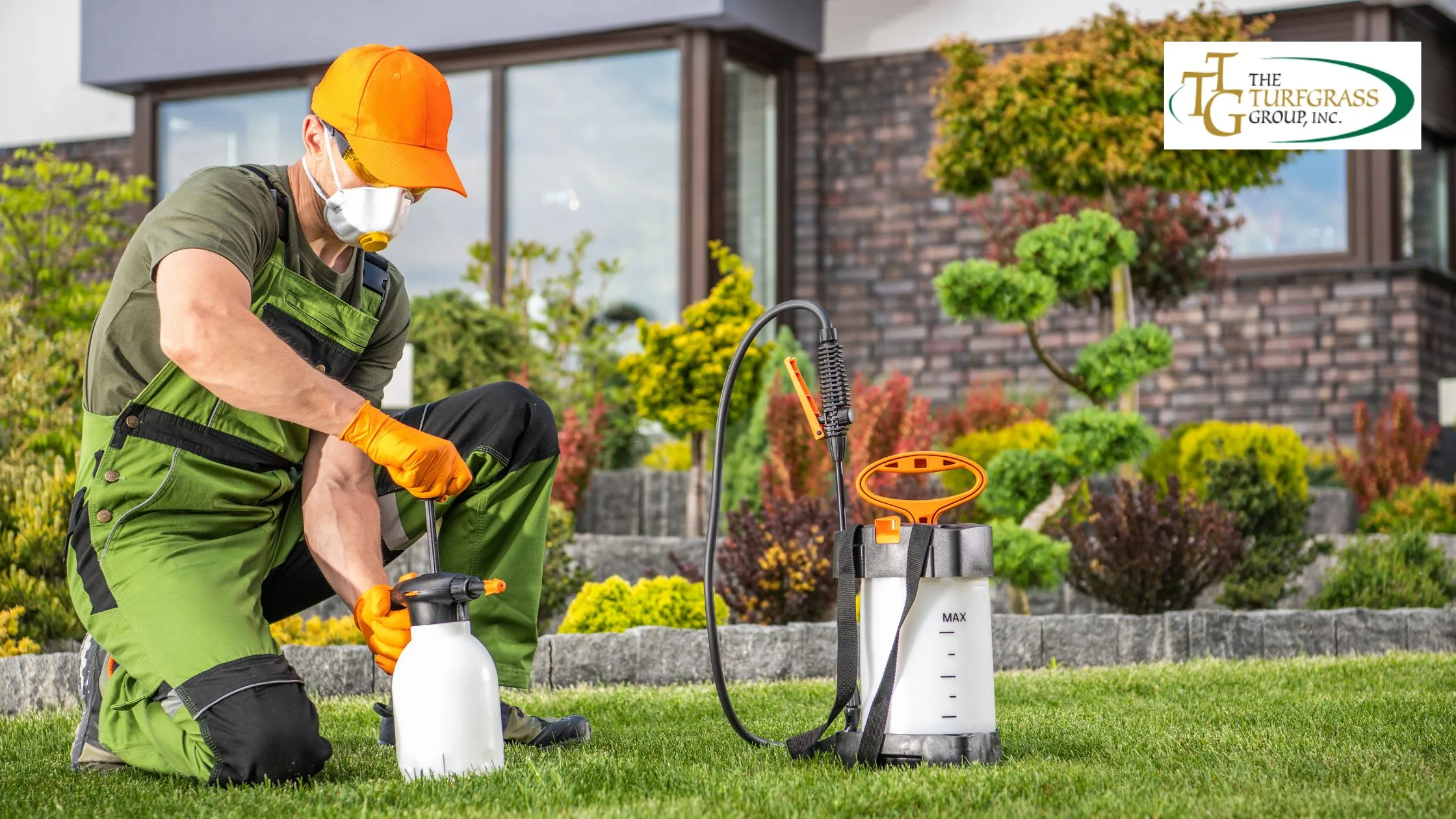
Trinity Zoysiagrass is prized for its dense growth, delicate texture, and excellent drought tolerance, making it a popular choice for homeowners and landscapers alike.
However, like any grass variety, it is susceptible to certain pests and diseases.
Proper management and timely interventions can keep your Trinity Zoysia Grass healthy and lush.
This article will provide you with detailed insights on identifying and dealing with common pests and diseases that may affect your lawn.
Common Pests in Trinity Zoysiagrass
White Grubs
White grubs are the larvae of various beetles, including Japanese beetles and June bugs.
These pests feed on the roots of the grass, causing it to weaken and die off in patches.
Symptoms include thinning grass, yellowing, and spongy turf that quickly pulls up.
Management:
- Cultural Control: Maintain a healthy lawn by mowing at the proper height (around 1-2 inches for Trinity Zoysiagrass) and watering deeply but infrequently to promote vigorous root growth.
- Biological Control: Use beneficial nematodes that specifically target and kill white grubs without harming other beneficial organisms.
- Chemical Control: Apply insecticides like Imidacloprid or Chlorantraniliprole in late spring or early summer when grubs are young and most susceptible.
Mole Crickets
Mole crickets are burrowing insects that feed on the roots and stems of grass, leading to tunneling damage, which can cause thinning and irregular patches on the lawn.
Management:
- Cultural Control: Regular aeration helps reduce soil compaction, making it harder for mole crickets to establish themselves.
- Biological Control: Parasitic nematodes and fungal pathogens, such as Beauveria bassiana, can be effective in controlling mole cricket populations.
- Chemical Control: Apply baits or granular insecticides like Bifenthrin in early spring or late summer when mole crickets are most active.
Chinch Bugs
Chinch bugs are minor, sap-sucking insects that can significantly damage Trinity Zoysiagrass.
They thrive in hot, dry conditions and cause yellowish-brown patches that can quickly spread if left untreated.
Management:
- Cultural Control: Avoid over-fertilizing your lawn, as high nitrogen levels can encourage chinch bug infestations. Keep your lawn well-watered during hot, dry periods.
- Biological Control: Introduce natural predators, such as predatory bugs or parasitic wasps, to help control chinch bug populations.
- Chemical Control: Apply insecticides like Bifenthrin or Carbaryl in the early morning or late afternoon when chinch bugs are most active.
Common Diseases in Trinity Zoysiagrass
Brown Patch Disease
Brown Patch is a fungal disease caused by Rhizoctonia solani.
It typically occurs during warm, humid conditions.
It appears as circular patches of brown, dead grass with a darker ring on the outer edges.
Management:
- Cultural Control: Avoid overwatering and reduce watering in the evening. Refrain from overplanting or over-fertilizing to ensure proper air circulation and sunlight.
- Chemical Control: Apply fungicides like Azoxystrobin or Propiconazole at the first sign of disease. Regular applications may be needed during peak infection periods.
Dollar Spot
Dollar Spot is another fungal disease that thrives in warm, humid conditions, mainly when the lawn is under-fertilized.
It appears as small, silver dollar-sized spots of bleached grass, which can merge into larger areas if left untreated.
Management:
- Cultural Control: Regular fertilization with a balanced fertilizer can help prevent Dollar Spot. Watering deeply and less frequently helps reduce the likelihood of disease.
- Chemical Control: Use fungicides such as Thiophanate-methyl or Chlorothalonil to control active infections. Preventative treatments are also effective during periods of high humidity.
Leaf Spot
Leaf Spot is a disease caused by various fungi, including Bipolaris and Drechslera species.
It appears as small, dark spots on the grass blades, which can expand and cause the grass to thin and die.
Management:
- Cultural Control: Maintain a consistent mowing schedule and avoid mowing the lawn too short. Reduce thatch buildup through regular dethatching and aeration.
- Chemical Control: Apply broad-spectrum fungicides like Mancozeb or Myclobutanil to control the spread of Leaf Spot. Early intervention is crucial in preventing widespread damage.
Preventative Measures and Best Practices
Proper Mowing
Maintaining the correct mowing height is crucial for preventing both pests and diseases in Trinity Zoysiagrass.
Mow the grass to a height of about 1-2 inches, and avoid cutting more than one-third of the blade length at a time.
This helps reduce stress on the grass and discourages pest infestations.

Balanced Fertilization
Over-fertilization can lead to excessive thatch buildup and make the lawn more susceptible to pests and diseases.
Apply a balanced fertilizer based on soil test results to ensure your lawn gets the necessary nutrients without overdoing it.
Adequate Watering
Water your Trinity Zoysiagrass profoundly but infrequently, aiming for about 1 inch of water per week, including rainfall.
Water early in the morning to reduce the risk of fungal diseases and allow the grass to dry before evening.
Regular Aeration and Dethatching
Aerate your lawn annually to alleviate soil compaction and promote healthy root growth.
Dethatch as needed to remove excessive thatch, which can harbor pests and diseases.
Monitoring and Early Intervention
Regularly inspect your lawn for signs of pests or diseases, especially during peak seasons.
Early detection and intervention can prevent minor issues from becoming major problems.
Conclusion
Maintaining a healthy Trinity Zoysia Grass lawn requires vigilance and proactive management of common pests and diseases.
By understanding the specific challenges associated with this grass variety and implementing the best practices outlined in this article, you can enjoy a beautiful, resilient lawn that thrives year-round.
With the proper care, Trinity Zoysiagrass will continue to be a valuable addition to any landscape, providing lush, green coverage and enhancing the overall aesthetic of your outdoor space.
If you’re ready to take the next step in caring for your Trinity Zoysia Grass or need expert advice on lawn maintenance, contact The Turfgrass Group today for professional guidance and support.
FAQs
What are the most common pests that affect Trinity Zoysiagrass?
- The most common pests include white grubs, mole crickets, and chinch bugs. These pests can cause significant damage to the grass by feeding on the roots, stems, and sap, leading to patches of dead or thinning grass.
How can I identify a white grub infestation in my Trinity Zoysiagrass?
- White grub infestations often present as thinning grass, yellowing, and spongy turf that quickly pulls up. Grubs are the larvae of beetles, such as Japanese beetles, and feed on the roots, weakening the grass.
What are the best methods for controlling white grubs on my lawn?
- Cultural Control: Maintain a healthy lawn by mowing at 1-2 inches and watering deeply but infrequently.
- Biological Control: Use beneficial nematodes that target white grubs.
- Chemical Control: Apply insecticides like Imidacloprid or Chlorantraniliprole in late spring or early summer when grubs are young.
How do mole crickets damage Trinity Zoysiagrass, and how can I manage them?
- Mole crickets burrow and feed on the roots and stems, causing tunneling damage and irregular patches on the lawn.
- Management: Regular aeration, biological controls like parasitic nematodes, and chemical baits or insecticides like Bifenthrin can help control mole crickets.
What are the signs of a chinchbug infestation, and how can I control it?
- Chinch bugs cause yellowish-brown patches that spread quickly, especially in hot, dry conditions.
- Management: Avoid over-fertilizing, keep the lawn well-watered, introduce natural predators, or apply insecticides like Bifenthrin during their active periods.
What diseases commonly affect Trinity Zoysiagrass?
- The most common diseases include Brown Patch Disease, Dollar Spot, and Leaf Spot. These fungal diseases thrive in warm, humid conditions and can cause significant damage if not appropriately managed.
How can I prevent Brown Patch Disease in my Trinity Zoysiagrass?
- Prevention: Avoid overwatering, especially in the evening, and ensure proper air circulation.
- Treatment: Apply fungicides like Azoxystrobin or Propiconazole at the first sign of disease.
What causes Dollar Spot in Trinity Zoysiagrass, and how do I treat it?
- Fungal pathogens cause Dollar Spot and appear as small, bleached spots on the grass.
- Management: Regular fertilization, deep watering, and fungicides like Thiophanate-methyl or Chlorothalonil can help control Dollar Spot.
How can I identify and manage Leaf Spot on my lawn?
- Leaf Spot appears as small, dark spots on grass blades that can cause thinning and dieback.
- Management: Maintain a consistent mowing schedule, reduce thatch, and apply fungicides like Mancozeb or Myclobutanil early on.
What general practices can help prevent pests and diseases in Trinity Zoysiagrass?
- Proper Mowing: Maintain a height of 1-2 inches and avoid cutting more than one-third of the blade length.
- Balanced Fertilization: Apply a balanced fertilizer based on soil tests.
- Adequate Watering: Water deeply and infrequently, aiming for 1 inch per week.
- Aeration and Dethatching: Aerate annually and dethatching as needed.
- Monitoring: Regularly inspect your lawn for early signs of pests or diseases and take prompt action.